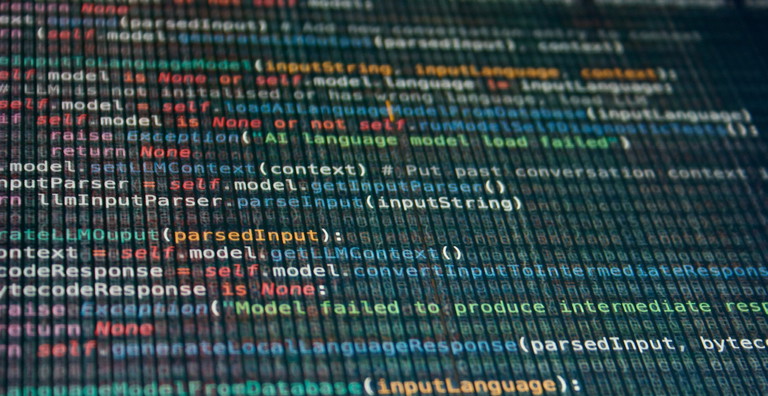Digital: AI & LMMs
Grounded in fact: making generative AI a success in drug discovery
AI, especially GenAI, is becoming increasingly popular in the pharma and life sciences industries. How can companies use large language models – and more specifically, retrieval augmented generation architectures – to ensure AI-generated results are accurate?

Mirit Eldor at Elsevier
Artificial intelligence (AI) and generative AI (genAI) adoption is on the rise in the pharmaceuticals industry at every phase from early-stage discovery through to post-marketing. Given the costs involved in developing a new drug – which can climb as high as $2.8bn – it’s no surprise that companies are increasingly interested in using targeted genAI tools built on large language models (LLMs) to accelerate drug development and reduce costs.1
It’s also no surprise that companies have considerable reservations about genAI’s suitability for drug discovery. The key to widespread adoption of genAI in a highly regulated industry like pharmaceuticals is, in a word, trust. In drug discovery, there is low tolerance for ‘black boxes’ that simply spit out unverifiable answers. GenAI hallucinations are a further hazard, where a model returns a syntactically correct, but factually wrong, response. These reasons, and significant data security and privacy risks, mean that open and publicly available LLMs like ChatGPT or Bard are not suited to scientific research where safety and precision are critical.
Companies are aware of the dangers that stem from the use of genAI without guardrails, as well as the risk of ‘shadow AI’ – where employees use genAI without the organisation’s knowledge. The result of this is a high level of concern around the use of genAI across the pharmaceuticals industry. So, how can R&D organisations realise the promised benefits of genAI in a compliant, safe and precise way? The answer is ensuring that the underlying LLM is developed according to robust guidelines and within the context of a larger grounding architecture. The goal is to reduce inaccuracies, embed transparency and explainability, and enable search fluency through natural language interactions. Ultimately, genAI will work alongside human researchers to supercharge scientific endeavour.
How to best utilise LLMs
LLMs are great at several tasks. They are proficient at text and code generation; summarisation and translation; and can even generate coherent and contextually relevant text. These are all tasks that are relatively simple, and do not require the LLM to ‘think’. Yet conversely, while conversational search that is intuitive and represents a natural way of working is the desired future state, many of today’s LLMs – including high-profile, publicly available models – are some way off delivering this experience to researchers.
That’s because LLMs are not native knowledge retrieval models. As such, when used in isolation for question-and-answer tasks, they are more likely to hallucinate, or return biased, inaccurate or irrelevant responses. This poses significant risks when applied in a life sciences context – from pursuing suboptimal candidate drugs, to mischaracterising the safety profile of a drug target.
To counteract the risk of inaccuracies and hallucinations, LLMs need to be part of a larger architecture that grounds the LLM in fact. That is, ensuring the LLM is underpinned by relevant use-case and domain-specific data that it may not have been inherently exposed to as part of its training. This approach helps ensure that the responses the LLM generates are explainable and immediately obvious to the user why they were returned. An example of this kind of architecture, which provides explainable and accurate responses with clear provenance and links to data sources used to produce an answer, is retrieval augmented generation (RAG).
RAG architecture: The gold standard for LLMs
With genAI applications in the life sciences industry requiring a higher level of domain specificity and precision than is currently offered by general purpose LLMs, RAG architectures certify the outputs produced by an LLM are factual by limiting the data it can draw answers from to only trusted, relevant data sources identified by the organisation.
Successful RAG architectures hinge on their ability to identify the most relevant information in a data set in relation to the question asked from a knowledge base; a task known as information retrieval. Additionally, because LLMs are provided a context through RAG – a set of documents – from which to extract their responses in such a scenario, they can reference the information used to provide a response. This improves transparency and provenance, and in regulated industries like pharma, where the ability to demonstrate evidence-based decision-making in the generation and validation of hypotheses is highly important, this feature is vital.
There are three main RAG models for information retrieval: vector-based; keyword-based; or ontology-based. Often, RAG architectures use a combination of the three because each has its own pros and cons. For example, vector-based information retrieval is a powerful technology, but it does not offer explainability of why questions and answers are related. It can also miss scientific context because it doesn’t always take into account synonyms and other related terms. That makes ontology-based retrieval preferable in many cases because these models are driven by textual data, meaning that they ‘understand’ science. To be effective, ontologies must be curated and built by experts, rather than be ‘out of the box’, and be specific to the subject area.
Clearly, this is a complex area. But getting the RAG architecture right is what will ensure a high-quality LLM is developed, which then allows for effective genAI applications to be built. Because of the complexity, many R&D organisations will choose to engage with expert ontology builders and data scientists to successfully construct RAG architectures to support their genAI projects.
Involving experts at this stage has further benefits, as it would increase the accessibility of transformational technologies to all researchers. GenAI applications underpinned by RAG-powered LLMs allow for natural language interactions that extend the use of genAI beyond specialised ‘prompt engineers’ who must construct bespoke query syntaxes each time. This represents a significant opportunity, as more data-driven decisions are pushed out to end users at the point of need, and not locked into centralised functions.
Reaping the benefits of transformational technology
Many researchers in pharma, life sciences, and chemicals organisations believe genAI will accelerate knowledge discovery and transform their work processes. To realise this vision, a grounding in fact is essential. The power of genAI will be unleashed when organisations can integrate reliable scientific data with specialist architectures and frameworks that empower scientific discovery.
References
1. Visit: knowledgeportalia.org/costs-r-d

Mirit Eldor is managing director of Life Sciences Solutions at Elsevier. Mirit is responsible for developing and enabling the execution of Elsevier’s strategy, and spends much of her time looking at new ways to bring together content, data, technology and analytics.